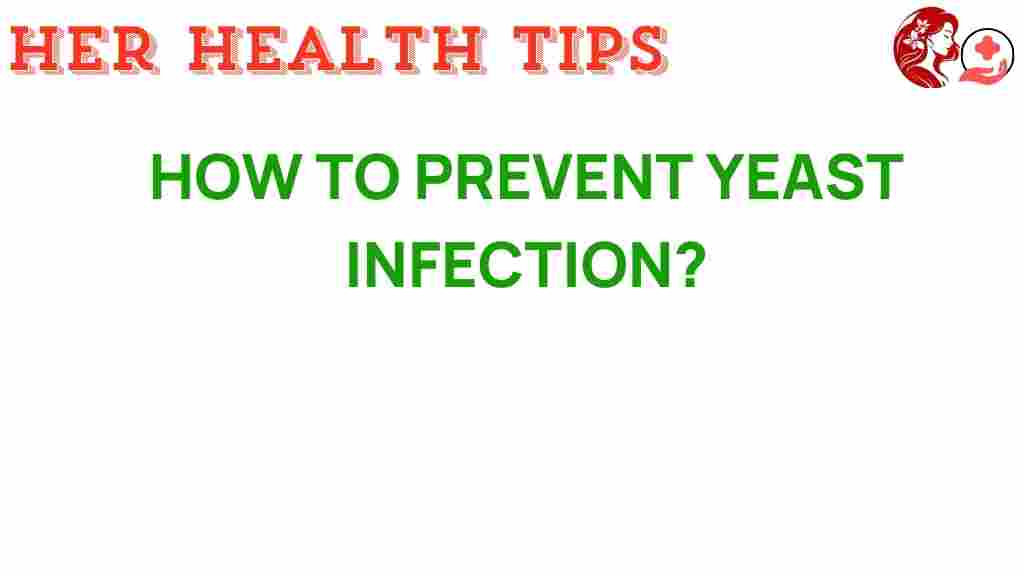Unlock the Secrets: How to Prevent Yeast Infections Effectively
Yeast infections are a common yet often misunderstood issue that affects many women at some point in their lives. These infections can be uncomfortable and frustrating, but the good news is that they can often be prevented. In this article, we will explore effective prevention strategies, health tips, and lifestyle changes that can help you maintain optimal women’s health and hygiene, while also discussing symptoms, treatment options, and the role of diet and probiotics.
Understanding Yeast Infections
A yeast infection, also known as candidiasis, is caused by an overgrowth of the fungus Candida, which is normally present in small amounts in the body. When the balance of bacteria and yeast in the body is disrupted, it can lead to an infection. Common symptoms of a yeast infection include:
- Itching and irritation in the vaginal area
- Thick, white vaginal discharge
- Redness and swelling of the vulva
- Burning sensation during urination or intercourse
Understanding the factors that contribute to yeast infections is crucial for effective prevention.
Key Factors Contributing to Yeast Infections
Several factors can increase the risk of developing a yeast infection, including:
- Antibiotic use, which can disrupt the natural balance of bacteria
- High sugar diets, which can feed yeast growth
- Hormonal changes, such as those during pregnancy or menstruation
- Weakened immune systems due to illness or stress
- Wearing tight or non-breathable clothing
Effective Strategies for Yeast Infection Prevention
To prevent yeast infections effectively, consider implementing the following strategies in your daily routine:
1. Maintain Good Hygiene
Proper hygiene is a cornerstone of prevention. Here are some hygiene tips:
- Wear breathable cotton underwear to help keep the area dry.
- Avoid douching, as it can disrupt the natural flora of the vagina.
- Change out of wet clothes promptly, especially swimsuits and workout gear.
- Wipe from front to back after using the bathroom to prevent bacteria from the anus entering the vagina.
2. Optimize Your Diet
Your diet plays a significant role in your overall health, including the health of your vaginal flora. Here are some dietary tips to consider:
- Reduce sugar intake, as high sugar levels can promote yeast growth.
- Incorporate foods that support gut health, such as yogurt, kefir, and fermented foods.
- Stay hydrated by drinking plenty of water, which can help flush out toxins.
- Include garlic in your diet, known for its antifungal properties.
3. Consider Probiotics
Probiotics are beneficial bacteria that can help maintain a healthy balance of flora in your body. To include probiotics in your routine:
- Consume probiotic-rich foods like yogurt, sauerkraut, and kimchi.
- Consider taking probiotic supplements, especially after a course of antibiotics.
- Consult with a healthcare provider for personalized recommendations.
4. Manage Stress
Stress can impact your immune system and contribute to yeast infections. Here are some ways to manage stress:
- Practice relaxation techniques such as yoga or meditation.
- Engage in regular physical activity to boost your mood.
- Ensure you get adequate sleep each night.
5. Choose the Right Clothing
What you wear can affect your risk of developing a yeast infection. Consider the following:
- Opt for loose-fitting clothing to allow for air circulation.
- Choose moisture-wicking fabrics for activewear.
- Avoid wearing pantyhose or tight jeans for extended periods.
Recognizing the Symptoms of Yeast Infections
Being aware of the symptoms of a yeast infection is essential for early detection and treatment. If you notice any of the following symptoms, it may be time to take action:
- Persistent itching and irritation
- Unusual discharge that resembles cottage cheese
- Swelling and redness of the vulva
- Discomfort during sexual activity
When to Seek Treatment
If you experience symptoms of a yeast infection, it is important to consult with a healthcare provider for a proper diagnosis and treatment plan. Over-the-counter antifungal treatments are available, but persistent or recurrent infections may require prescription medication.
Troubleshooting Common Issues
Even with the best prevention strategies, some women may still experience yeast infections. Here are some troubleshooting tips:
- If you notice symptoms after starting a new medication, consult your doctor to discuss alternatives.
- Keep a journal of your diet and symptoms to identify potential triggers.
- If you frequently experience yeast infections, consider speaking to a specialist.
Internal Link for Further Reading
For more information on maintaining your overall health, check out our article on Women’s Health Tips.
External Resource
For additional insights on yeast infections and treatment, visit the CDC’s official page.
Conclusion
Preventing yeast infections is achievable through a combination of good hygiene, dietary choices, lifestyle adjustments, and stress management. By taking proactive steps to maintain your vaginal health, you can significantly reduce your risk of developing a yeast infection. Remember, if you experience symptoms, seeking treatment promptly is essential for your comfort and health. With these tips, you can unlock the secrets to a healthier, happier life, free from the discomfort of yeast infections.
This article is in the category Reproductive and created by HerHealthTips Team
